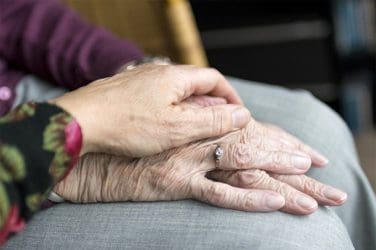Alzheimer’s disease, a progressive neurodevelopment disorder marked by cognitive and behavioral impairments, is one of the most prominent types of dementia affecting older adults worldwide. One intriguing and often distressing symptom associated with Alzheimer’s disease is a phenomenon known as sundowning. In this article, we aim to explore the condition among Alzheimer’s patients and delve into its symptoms, possible triggers, and potential coping strategies for caregivers and healthcare providers.
Understanding Sundowning
Sundowning Alzheimer’s patients experience a unique syndrome characterized by the onset or escalation of neuropsychiatric symptoms such as confusion, agitation, and restlessness in the late afternoon or early evening, continuing into the night. These behavioral changes are not limited to Alzheimer’s patients, but the condition appears to be particularly prevalent and challenging among this population.
Theories Behind Sundowning
Researchers are yet to pinpoint the exact cause of sundowning stage development, but several theories have been proposed to explain this phenomenon. One theory is based on the concept of “Circadian Rhythm Dysfunction.” Our bodies have internal clocks, known as circadian rhythms, that signal our bodies when to sleep, wake up, and eat. Alzheimer’s disease may disrupt these rhythms, leading to periods of increased agitation and confusion in the evening.
Another theory involves “Sensory Integration Dysfunction.” It suggests that Alzheimer’s patients have difficulty processing sensory information, and the reduced light and increased shadows at sundown may increase confusion and disorientation.
“Exhaustion Theory” is another proposition where the accumulated physical and mental exhaustion from the day’s activities leads to increased restlessness and irritability during the evening hours.
Clinical Presentation of Sundowning

Sundowning can present a wide array of symptoms. Patients may exhibit increased confusion, restlessness, anxiety, agitation, and even aggressive behavior. They may also experience mood swings, hallucinations, or paranoia. As the day progresses, these symptoms may escalate, often peaking during the evening hours.
Moreover, many patients who experience it often have disrupted sleep patterns, which can exacerbate their cognitive impairment and further contribute to their restlessness and agitation. The cyclical nature of this syndrome – with symptoms worsening in the evening, leading to disturbed sleep, and then further aggravating symptoms the next day – can be particularly challenging for caregivers and healthcare providers to manage.
Assessing Sundowning in Clinical Practice
Accurately assessing sundowning in clinical practice is crucial for providing effective care. However, it can be challenging due to its variable presentation and the lack of standardized assessment tools. Most assessments are currently based on caregiver reports, which can be subject to bias. Despite these challenges, consistent monitoring and documentation of behavioral changes and sleep disturbances can provide valuable insights into the pattern and severity of the condition, thereby guiding interventions.
Neurobiological Underpinnings
There is evidence to suggest that sundowning may have neurobiological underpinnings. Some studies have found that patients with the condition have more significant degeneration in the suprachiasmatic nucleus, the part of the brain that regulates circadian rhythms. Other studies have identified abnormal melatonin regulation among Alzheimer’s patients with the condition. Melatonin, a hormone that helps regulate sleep-wake cycles, is typically produced in higher amounts in the evening to promote sleep. However, some patients with the condition may have decreased or delayed melatonin production, leading to disturbances in their sleep-wake cycles.
Potential Triggers
While the exact cause of sundowning is not fully understood, several factors are believed to contribute to the onset of this phenomenon. These factors can be broadly categorized into biological, environmental, and psychological triggers.
Biologically, disturbances in the internal body clock, which regulates sleep and wakefulness, may play a significant role. As Alzheimer’s disease progresses, this internal clock can become disrupted, leading to confusion and irritation as day turns into night.
Environmentally, the reduction in light and increased shadows in the evening can lead to increased confusion and fear among Alzheimer’s patients, triggering symptoms of sundowning. Furthermore, the transition from a typically active day to a quieter evening can be disorienting for some patients.
Psychologically, fatigue, boredom, and stress can also contribute to the condition. After a full day’s activities, patients may be overstimulated or exhausted, leading to an increase in confusion and irritation. Likewise, the lack of engaging activities in the evening can lead to feelings of boredom and restlessness.
Coping Strategies for Sundowning
Given the complexities associated with the condition, a multimodal approach that includes behavioral strategies, environmental modifications, and, when necessary, pharmacological interventions, is often required.
Behavioral strategies involve maintaining a regular routine, engaging patients in calming activities in the late afternoon and early evening, and ensuring they get adequate daytime exposure to natural light to help regulate their body clocks. Providing frequent reassurances and using simple, calming communication can also help reduce anxiety and irritation.
Environmental modifications such as reducing noise and clutter, increasing lighting in the evening to reduce shadows, and ensuring a comfortable sleep environment can also help manage symptoms.
When non-pharmacological interventions are insufficient, clinicians may consider medication. However, this is typically a last resort, given the potential side effects and the desire to adopt a person-centered approach focusing on the patient’s comfort and quality of life.
Technological Interventions
Advancements in technology have also brought forward innovative solutions to help manage sundowning. These include smart lighting systems that adjust lighting levels to mimic natural sunlight, reducing confusion associated with changing light levels. Another intervention is digital reminiscence therapy, which uses video or audio recordings to evoke positive memories, thereby reducing agitation and restlessness. These technologies, when combined with conventional strategies, can offer promising ways to improve the quality of life for Alzheimer’s disease patients experiencing the condition.
The Impact on Caregivers
The impact of sundowning extends beyond the patients; it significantly affects their caregivers. The increased agitation and confusion in the evening may require more intensive caregiving efforts, leading to increased stress and burnout. In some cases, it can even result in the need for assisted living for dementia patients. Providing loved ones with education and resources to manage the condition is an essential part of Alzheimer’s care. Support groups, respite care, and counseling can also be beneficial for caregivers.
Current Research

Researchers continue to investigate sundowning to understand its causes and develop more effective interventions. Some current research is exploring the role of light therapy in regulating circadian rhythms and reducing symptoms of sundowning. Other research is looking at the potential of medications that regulate melatonin levels. Additionally, some researchers are developing and testing non-pharmacological interventions, such as individualized activity programs and environmental modifications, to manage the condition.
Future Perspectives
The future perspectives on sundowning involve a multidisciplinary approach that incorporates advances in research, technology, and patient-centered care. As research uncovers more about the neurobiological underpinnings of the condition, more targeted interventions can be developed.
At the same time, technological innovations can provide practical tools to help manage the condition. However, the importance of personalized, patient-centered care cannot be overstated. Each patient’s experience is unique, and their care should be tailored to their needs and preferences. Furthermore, ongoing support for caregivers, through education and resources, will continue to be a critical aspect of managing the condition.
Concluding Thoughts on Sundowning
In conclusion, sundowning presents a unique set of challenges for both Alzheimer’s patients and their caregivers. While the exact cause remains unclear, a combination of biological, environmental, and psychological factors appear to contribute to its occurrence. Understanding these triggers can help in managing the condition and improving the quality of life for patients and their caregivers.
Despite its challenges, there are several strategies to mitigate the effects of the condition, such as maintaining a routine, making environmental adjustments, and offering calming activities. However, a personalized approach is critical, as each patient’s experience can be unique. As we continue to explore the depths of Alzheimer’s disease, the condition remains an area requiring further research and understanding to develop more effective interventions and support for those affected by this complex phenomenon.









